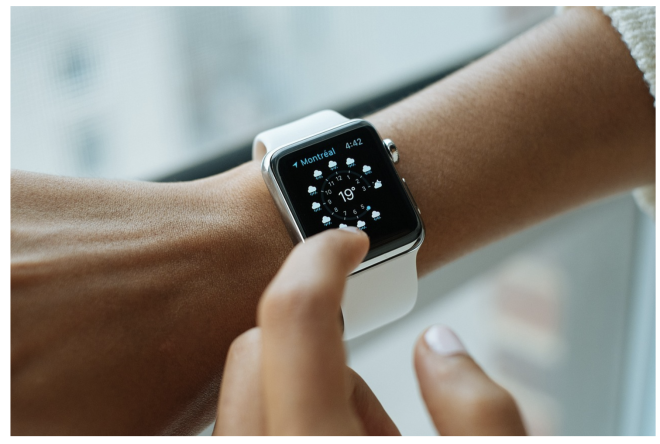- Change theme
The Future of IoT in Entertainment: How Wearable Tech is Reshaping Experiences

Wearable technology, once limited to fitness tracking, has now expanded into a sophisticated tool enhancing how we experience entertainment.
06:34 21 February 2025
The entertainment industry is undergoing a transformation, with the Internet of Things (IoT) playing a massive role in shaping the way people engage with music, sports, gaming, and even live events. Wearable technology, once limited to fitness tracking, has now expanded into a sophisticated tool enhancing how we experience entertainment. From smart glasses offering immersive experiences to wristbands that allow seamless transactions, IoT is making entertainment more personalized, interactive, and efficient.
Smart Wearables in Gaming and Esports
Gaming has long been at the forefront of technological advancements, and IoT is taking this to the next level. Wearable gaming devices, such as haptic gloves and VR headsets, allow for a more interactive experience. Players can feel in-game movements, whether it’s the tension of drawing a bowstring or the impact of an explosion in a virtual battle.
Esports competitions are also leveraging IoT wearables to track players’ heart rates, reactions, and performance metrics. This data is then used to provide real-time insights to both players and fans. Some platforms even integrate this data into live streams, allowing viewers to see stress levels and decision-making pressure in real time.
Additionally, casinos are tapping into wearable IoT devices. Smartwatches and biometric wearables are being used for secure transactions, allowing players to link their devices to digital wallets for contactless payments at slot machines and tables. Some high-end casinos have even experimented with AR glasses that provide real-time odds and strategy recommendations for certain games, adding a tech-driven layer to the traditional gambling experience.
While these advancements are exciting, many players are also seeking out alternatives that offer more flexibility and better rewards, especially in online casinos that are not registered with the UK's gambling sefl-exclusion program GamStop. As gambling expert Maxime Blanc points out, the best online casinos not on GamStop often offer higher betting limits, faster payouts, more extensive game libraries with thousands of games, and appealing bonuses such as welcome rewards, free spins, cashback offers, and deposit bonuses which is why these platforms still attract many players despite the advancements in wearable technology in land-based gambling establishments.
Immersive Live Events
One of the most noticeable impacts of IoT in entertainment is in live events such as concerts, festivals, and sporting events. Smart wristbands embedded with RFID technology have changed how attendees interact with events. These devices allow cashless transactions, reducing wait times for food, drinks, and merchandise. Additionally, they provide real-time audience engagement, enabling organizers to send tailored notifications, exclusive offers, and even special VIP experiences.
Beyond wristbands, smart glasses and augmented reality (AR) headsets are enhancing event experiences by providing live stats, behind-the-scenes content, and interactive overlays. Some venues are even experimenting with haptic suits that allow users to feel vibrations and movements synchronized with live performances, deepening the immersive experience.
Revolutionizing Home Entertainment
IoT wearables aren’t just making public entertainment more exciting—they’re changing how people consume media at home. Smart headphones equipped with AI-driven noise cancellation and personalized audio profiles are optimizing the way people experience music and movies. These devices adapt sound levels based on the environment, ensuring a seamless listening experience.
In the world of home gaming, IoT-connected VR headsets and controllers are improving how players engage with virtual worlds. Devices like haptic vests give users real-time physical feedback, making gaming experiences more immersive than ever before.
Fitness Meets Entertainment
Another area where IoT and wearables are making waves is in fitness-driven entertainment. Companies are creating smart clothing and accessories that track motion and sync with music, making workouts more engaging. Gamified fitness apps use wearable sensors to turn exercise into an interactive experience, where users earn points or compete against friends based on their movement data.
The Future of Wearable Tech in Entertainment
As IoT continues to evolve, the integration of wearables in entertainment will only expand. The future may see brain-computer interfaces that allow users to control digital environments with their thoughts or even smart fabrics that respond to emotions, altering colors and patterns based on mood.
With the combination of AI, machine learning, and 5G connectivity, wearable tech will move beyond convenience and into fully immersive entertainment ecosystems that redefine how people experience gaming, music, and live events.
Final Thoughts
Wearable technology, powered by IoT, is rapidly transforming entertainment by making it more interactive, immersive, and personalized. Whether it’s through smartwatches in casinos, haptic suits at concerts, or AR glasses at esports events, the fusion of technology and entertainment is creating experiences that once seemed like science fiction. As innovation continues, the next decade will likely bring even more
